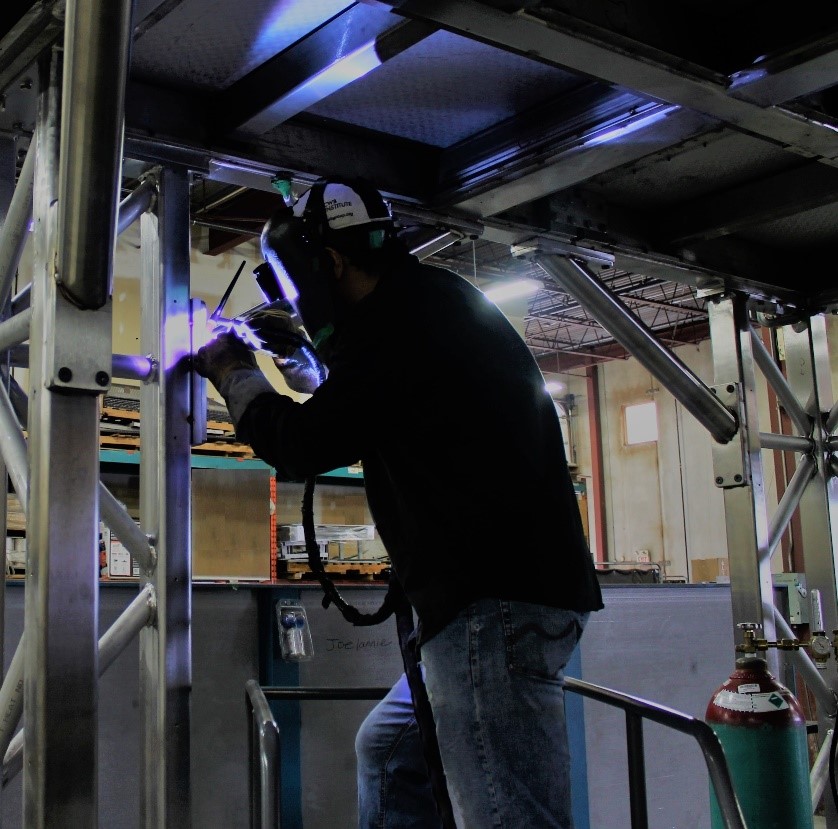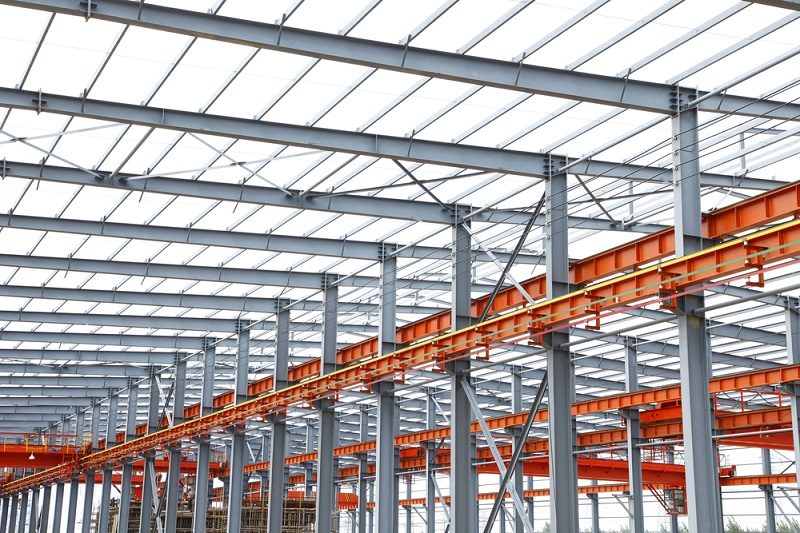Comprehensive Evaluation of Cutting-Edge Techniques in Steel Fabrication Industry
As the steel manufacture sector continues to advance, the assimilation of sophisticated methods has come to be crucial for remaining affordable and meeting the needs of contemporary production requirements. In this dynamic sector where modern technology plays an essential function, understanding the subtleties of these innovative strategies is not just an alternative yet a need for those looking to create in advance in the ever-evolving globe of steel construction.
Laser Cutting Developments
In the world of steel manufacture, laser cutting advancements have revolutionized the accuracy and effectiveness of steel shaping procedures. By using the power of concentrated laser beams, suppliers can now achieve unparalleled degrees of precision when puncturing numerous kinds of metals. This technology allows detailed layouts to be carried out with very little material wastefulness, making it a cost-effective service for markets needing high precision components.
Among the vital advantages of laser cutting is its capability to handle a variety of products, including stainless steel, aluminum, and carbon steel, with simplicity. The process creates clean, burr-free edges, removing the requirement for additional finishing steps. The non-contact nature of laser cutting minimizes the risk of material contamination, resulting in greater quality end products.
Moreover, laser cutting makers can be configured to make swift, accurate cuts, considerably lowering manufacturing time compared to traditional cutting techniques. This speed and precision make laser reducing specifically ideal for automation atmospheres where performance is critical. As innovation remains to advance, laser cutting is positioned to play a progressively essential role in the steel construction market.

CNC Machining Innovations
The advancement of CNC machining innovations has ushered in a new period of precision and effectiveness in the steel manufacture market. Computer System Numerical Control (CNC) equipments have reinvented steel manufacture by supplying unrivaled precision and repeatability in the manufacturing procedure. metal fabrication melbourne. One of the key technologies in CNC machining is the assimilation of advanced software systems that enable real-time monitoring and modifications, causing boosted productivity and top quality control
Additionally, the advancement of multi-axis CNC machines has enabled the fabrication of complicated steel components with intricate designs that were previously challenging to create. These equipments can perform a variety of machining operations, consisting of milling, drilling, turning, and grinding, all with high levels of accuracy.
Moreover, the incorporation of automation and robotics in CNC machining has structured manufacturing processes, decreased lead times, and decreased the margin of error. This combination of innovative technologies not just boosts effectiveness but likewise makes certain constant high quality throughout all produced steel components. In verdict, CNC machining developments continue to drive innovations in the steel fabrication sector, setting new criteria for accuracy and efficiency.
Automated Welding Technologies
Automated welding innovations have reinvented the steel fabrication sector, improving performance and accuracy in the welding process. These innovative technologies make use of computer-controlled systems to automate the welding process, leading to higher productivity degrees and enhanced weld high quality. Among the essential benefits of automated welding is the capacity to carry out intricate welds with regular precision, decreasing the probability of errors and rework.
Robotic welding systems are at the center of automated welding modern technologies, using unequaled rate and accuracy. These systems can deal with a wide variety of welding tasks, from straightforward to elaborate, easily (metal fabrication melbourne). By using sophisticated sensing units and software program, robot welders can adjust to variations in material and joint geometry, guaranteeing an uniform and trusted weld
Additionally, automated welding technologies boost office safety by reducing the exposure of human welders to harmful fumes and intense warmth. As the steel construction sector continues to advance, including automated welding great post to read innovations will be crucial for companies looking to stay affordable and meet the expanding demands for high-grade welded items.
Robotics Assimilation in Fabrication
Making use of robot systems in fabrication procedures has ended up being a critical approach for enhancing performance and accuracy in modern-day manufacturing environments. Robotics assimilation in steel construction offers a myriad of benefits, including increased productivity, enhanced quality assurance, and improved safety measures. These sophisticated robot systems are outfitted with innovative sensing units and programs abilities, enabling them to perform complex tasks with a high degree of precision and repeatability.
Among the vital benefits of robotics combination in steel manufacture is the capability to automate recurring tasks, such as product handling, cutting, welding, and setting up processes. This not only quickens production cycles yet additionally lowers the risk of human error, bring about greater overall item quality. In addition, robotics can operate 24/7, substantially improving manufacturing result and conference limited job target dates.

3D Printing in Steel Manufacturing
Having revolutionized the steel fabrication market with robotics combination, the expanding expedition of 3D printing in steel manufacturing is poised to further breakthrough the realm of contemporary manufacturing methods. 3D printing, also referred to as additive production, uses unmatched design flexibility and intricacy, enabling the production of elaborate steel structures that were formerly unattainable via traditional production techniques. By utilizing computer-aided layout (CAD) software program, producers can precisely manage the layer-by-layer deposition of steel product, leading to parts with boosted performances and geometries.
One of the vital benefits of 3D printing in steel production is its capacity to decrease material waste significantly. Unlike subtractive production processes where excess product is trimmed away, 3D printing just More Info utilizes the necessary amount of steel required for the last part. This effectiveness not only causes cost savings yet also straightens with lasting manufacturing methods by lessening environmental impact.
Moreover, 3D printing makes it possible for quick prototyping and customization, allowing for the production of small batches of intricate steel parts with brief preparations. As the modern technology continues to grow and end up being extra accessible, its integration right into mainstream steel fabrication processes is anticipated to drive technology and efficiency across the industry.
Verdict
To conclude, the steel fabrication sector has actually seen substantial innovations in methods such as laser cutting, CNC machining, automated welding, robotics combination, and 3D printing. These innovative technologies have transformed the method steel items are manufactured, causing raised cost-effectiveness, efficiency, and precision. Continued financial investment in these innovative this techniques is vital for the market to remain affordable and fulfill the needs of modern-day manufacturing processes.
As the steel fabrication market proceeds to advance, the assimilation of advanced strategies has actually come to be vital for staying affordable and fulfilling the demands of modern manufacturing requirements.One of the vital benefits of laser cutting is its capacity to deal with a vast array of products, consisting of stainless steel, aluminum, and carbon steel, with ease.Automated welding modern technologies have actually reinvented the steel construction sector, improving efficiency and precision in the welding process.Having revolutionized the steel fabrication sector through robotics assimilation, the burgeoning expedition of 3D printing in steel production is poised to further breakthrough the realm of modern manufacturing methods.In verdict, the steel fabrication industry has seen substantial developments in techniques such as laser cutting, CNC machining, automated welding, robotics assimilation, and 3D printing.